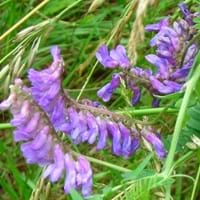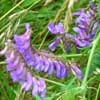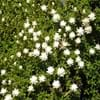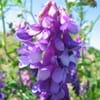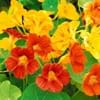Life Span
Annual
Perennial
Origin
Europe, Asia
Southern Europe, Mediterranean, Southern Asia
Types
Not Available
Bigleaf hydrangea, Hortensia, Smooth hydrangea, Oakleaf hydrangea, Annabelle
Number of Varieties
Not Available
Habitat
agricultural areas
Forest edges, Hillside, Woods
USDA Hardiness Zone
3-7
Not Available
Sunset Zone
Not Available
1a, 1b, 2a, 2b, 3a, 3b, 4, 5, 6, 7, 8, 9, 10, 11, 12, 13, 14, 15, 16, 17, 18, 19, 20, 21, 22, 23, 24
Habit
Prostrate/Trailing
Arching/Fountain-shaped
Flower Color
Purple, Violet
White, Blue, Pink, Lavender
Flower Color Modifier
Bicolor
Bicolor
Fruit Color
Not Available
Not Available
Leaf Color in Spring
Green, Light Green
Green, Olive, Gray Green, Dark Green
Leaf Color in Summer
Green, Light Green
Green, Olive, Gray Green, Dark Green
Leaf Color in Fall
Green, Light Green
Green, Olive, Gray Green, Dark Green
Leaf Color in Winter
Light Green
Light Green
Leaf Shape
Compound
Oblovate
Plant Season
Spring, Summer
Spring, Summer, Fall, Winter
Sunlight
Full Sun, Partial Sun
Full Sun, Partial Sun
Growth Rate
Very Fast
Fast
Type of Soil
Clay, Loam, Sand
Loam, Sand
The pH of Soil
Acidic, Neutral, Alkaline
Neutral, Alkaline
Soil Drainage
Average
Well drained
Bloom Time
Late Spring, Early Summer, Summer
Early Spring, Spring, Late Spring, Early Summer, Summer, Late Summer
Tolerances
Drought
Drought
Where to Plant?
Ground
Container, Ground
How to Plant?
Seedlings
Seedlings, Stem Planting
Plant Maintenance
Medium
Medium
Watering Requirements
Average Water Needs
Not Available
In Summer
Lots of watering
Average Water
In Spring
Moderate
Moderate
In Winter
Average Water
Average Water
Soil pH
Neutral
Neutral, Alkaline
Soil Type
Well drained
Loam, Sand
Soil Drainage Capacity
Well drained
Well drained
Sun Exposure
Partial shade
Full Sun, Partial Sun
Pruning
Remove damaged leaves, Remove dead branches, Remove dead leaves
Remove damaged leaves, Remove dead branches, Remove dead leaves
Fertilizers
All-Purpose Liquid Fertilizer
All-Purpose Liquid Fertilizer
Pests and Diseases
Red blotch
Red blotch
Plant Tolerance
Drought
Drought
Flower Petal Number
Single
Single
Fragrant Bark/Stem
No
Yes
Foliage Texture
Fine
Fine
Foliage Sheen
Matte
Not Available
Evergreen
No
Not Available
Attracts
Butterflies
Bees, Flies
Allergy
Not Available
Chest tightness, Diarrhea, Dizziness, Nausea, Vomiting
Aesthetic Uses
Not Available
Not Available
Beauty Benefits
Not Available
Not Available
Edible Uses
Yes
Not Available
Environmental Uses
Erosion control
Air purification
Medicinal Uses
Not Available
Fever, Kidney problems, Urinary tract problems
Part of Plant Used
Root, Stem
Flowers, Root
Other Uses
cultivated as pasture or hay crop
Not Available
Used As Indoor Plant
No
Not Available
Used As Outdoor Plant
Yes
Yes
Garden Design
Groundcover
Bedding Plant, Container, Edging, Edible, Groundcover, Hanging Basket, Herb / Vegetable, Mixed Border, Rock Garden / Wall
Botanical Name
VICIA villosa 'Purple Bounty'
THYMUS 'Hartington Silver'
Common Name
Hairy Vetch, Purple Bounty Vetch
Silver Thyme, Thyme
In Hindi
Purple Bounty Vetch
Hydrangea
In German
Lila Bounty Wicke
Hortensie
In French
Violet Bounty Vetch
Hortensia
In Spanish
Purple Bounty Arveja
Hortensia
In Greek
Μωβ Bounty Vetch
υδραγεία
In Portuguese
Roxo recompensa ervilhaca
Hortênsia
In Polish
Purpurowy Bounty Wyka
Hortensja
In Latin
Bounty purpura Vetch
Hibiscus
Phylum
Magnoliophyta
Not Available
Class
Magnoliopsida
Not Available
Order
Fabales
Not Available
Family
Fabaceae
Lamiaceae
Genus
Vicia
Not Available
Clade
Angiosperms, Eudicots, Rosids
Not Available
Tribe
Vicieae
Not Available
Subfamily
Faboideae
Not Available
Number of Species
Not Available
Season and Care of Purple Bounty Vetch and Silver Thyme
Season and care of Purple Bounty Vetch and Silver Thyme is important to know. While considering everything about Purple Bounty Vetch and Silver Thyme Care, growing season is an essential factor. Purple Bounty Vetch season is Spring and Summer and Silver Thyme season is Spring and Summer. The type of soil for Purple Bounty Vetch is Clay, Loam, Sand and for Silver Thyme is Loam, Sand while the PH of soil for Purple Bounty Vetch is Acidic, Neutral, Alkaline and for Silver Thyme is Neutral, Alkaline.
Purple Bounty Vetch and Silver Thyme Physical Information
Purple Bounty Vetch and Silver Thyme physical information is very important for comparison. Purple Bounty Vetch height is 30.00 cm and width 60.00 cm whereas Silver Thyme height is 6.56 cm and width 10.50 cm. The color specification of Purple Bounty Vetch and Silver Thyme are as follows:
Purple Bounty Vetch flower color: Purple and Violet
Purple Bounty Vetch leaf color: Green and Light Green
Silver Thyme flower color: White, Blue, Pink and Lavender
- Silver Thyme leaf color: Green, Olive, Gray Green and Dark Green
Care of Purple Bounty Vetch and Silver Thyme
Care of Purple Bounty Vetch and Silver Thyme include pruning, fertilizers, watering etc. Purple Bounty Vetch pruning is done Remove damaged leaves, Remove dead branches and Remove dead leaves and Silver Thyme pruning is done Remove damaged leaves, Remove dead branches and Remove dead leaves. In summer Purple Bounty Vetch needs Lots of watering and in winter, it needs Average Water. Whereas, in summer Silver Thyme needs Average Water and in winter, it needs Average Water.
